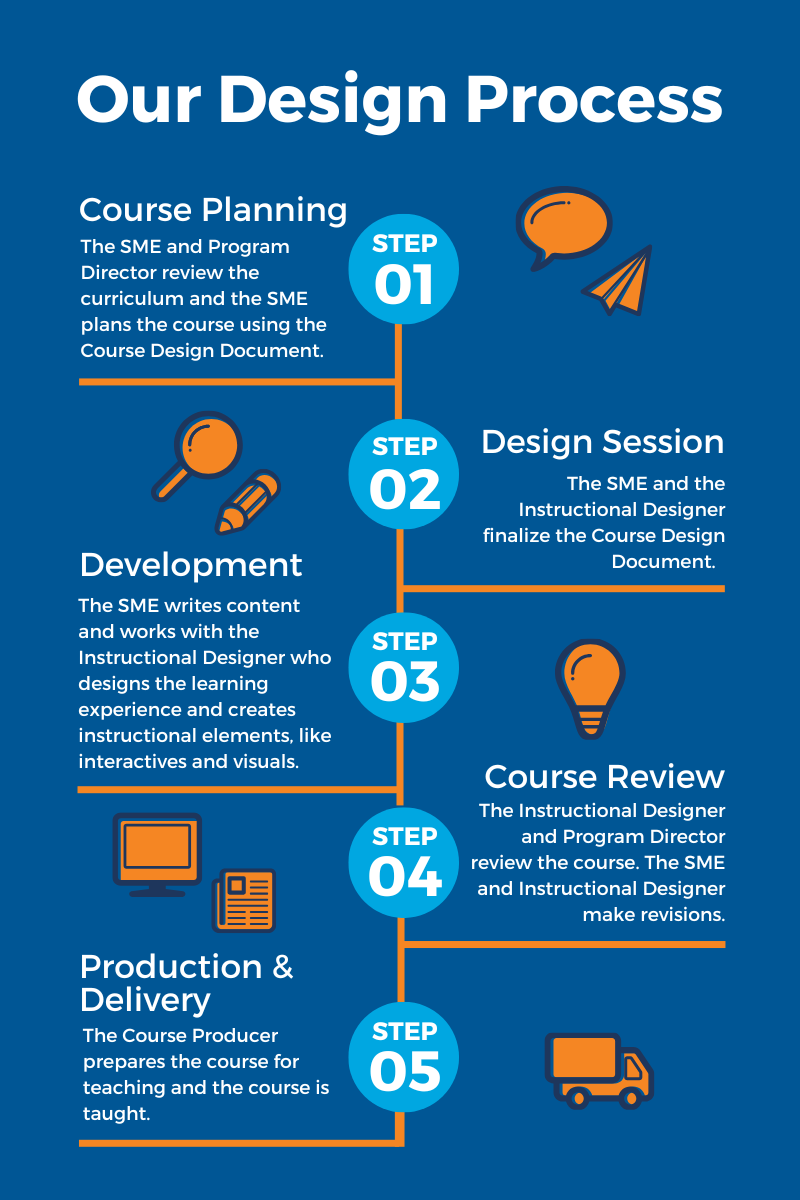Members of the eLearning team will be assigned to your project and will be your partners in the design and development process of your course. Let’s first review the roles of each development team member!
Roles & Responsibilities
Subject Matter Expert (SME) – You!
- Completes the course design document with the PD
- Writes all content that meets or exceeds the stated outcomes of the course
- Develops all of the content for assessment and evaluation tools, including, but not limited to assignments, discussion questions, quizzes, projects, and scoring rubrics
- Meets all agreed-upon deadlines
- Makes revisions based on feedback from the Instructional Designer and Program Director
Program Director (PD)
- Hires the SME to develop the course
- Works with the SME to complete the course design document
- Provides information to the SME regarding course objectives, target audience, scope of the work, and required elements, and contract information
- Approves content at different stages throughout the course design and development process
Instructional Designer (ID)
- Applies research-based instructional design theories, models, and frameworks to transform subject matter expertise into dynamic online learning experiences.
- Designs and develops learning materials that adhere to accessibility standards, ensuring that all students, regardless of abilities, can access and engage with the course content.
- Ensures the alignment of learning outcomes with course activities, interactions, assessments, and learning resources.
- Integrates innovative educational technologies and research-based teaching strategies to enhance the learning experience.
- Elevates the online learning experience through the application of visual design principles, ensuring a consistent look, feel, and quality aligned with department branding standards.
- Researches and explores emerging learning design trends and technologies to continuously enhance the quality of online learning experiences.
Our Process
Development projects vary from small revisions to completely new courses. Let’s take a look at the design and development process at a high level as it applies to most projects.
The Design and Development process consists of these steps:

There is an ongoing evaluation process after the course is developed. Feedback is gathered from students through the Mid-Point and end-of-course VOICE surveys. Feedback is gathered from instructors through the Instructor Feedback Form. When necessary, courses are revised.